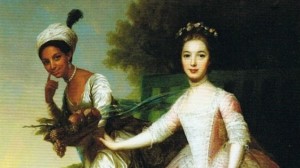Frank: The Real Story of the Singer With the Paper-Mache Mask
Posted on August 21, 2014 at 9:10 am
One of the handsomest men alive spends almost the entire movie wearing a huge round paper maché head in “Frank,” a moving film inspired by the real-life story of the late Frank Sidebottom. Michael Fassbender plays Frank, a sweet-natured but very quirky musician who wears his big head mask even in the shower.
The film is co-written by journalist Jon Ronson, based on his own experiences playing keyboards for Frank Sidebottom, the stage name/head of the late Chris Sievey.
There was something fantastically warped about the act, which was four men assiduously emulating and fleshing out with real instruments the swing-beat chord sound of a cheap children’s Casio keyboard, with a living, slightly eerie cartoon character prancing around at the front, singing in a nasal Mancunian twang, as if he had a swimming peg attached to his nose. Each song ended with the same words: “You know it is, it really is, thank you.”
…
In those days, the identity of the man under the head was the subject of great speculation. On many occasions, Sidebottom fans would barge into the dressing room before a show and refuse to leave until the real Frank revealed himself. They’d go around the room: “It’s you, isn’t it? No. You’re Frank, aren’t you?” On most occasions, the only person they wouldn’t bother asking was the unassuming Chris , who blended into the wall.
Thanks to the head, “Frank” the film functions as a biopic mash-up of multiple artists. “We spent a lot of time together hammering out how this hidden character could contain almost any number of influences and traits,” said the director, Lenny Abrahamson. “And as we went on, it became clear that the most exciting thing for us would be to make him stand for and refract lots of these outsider musicians.”
And so Frank is the eccentric Syd Barrett. Frank is Lee (Scratch) Perry. Frank is Brian Wilson. Frank is Roky Erickson. The deeply troubled but beloved Austin, Tex., singer songwriter Daniel Johnston is under that head as well. And when the fictional band decamps to a remote home in the countryside, “That’s a riff on Captain Beefheart’s recording of ‘Trout Mask Replica,’ ” Mr. Abrahamson said, referring to the 1969 classic.
Eliminating the burden of fact freed the filmmakers to explore the madness involved in creating art itself rather than the minutiae of one particular artist. It’s at heart a slapstick comedy, albeit one about extremely messed-up souls. “You’re just going to have to go with this,” a band mate played by Scoot McNairy explains to the fictional Ronson.
Here’s Frank Sidebottom performing Queen covers.
The real Sievey’s best-known song was with his earlier group, The Freshies.

